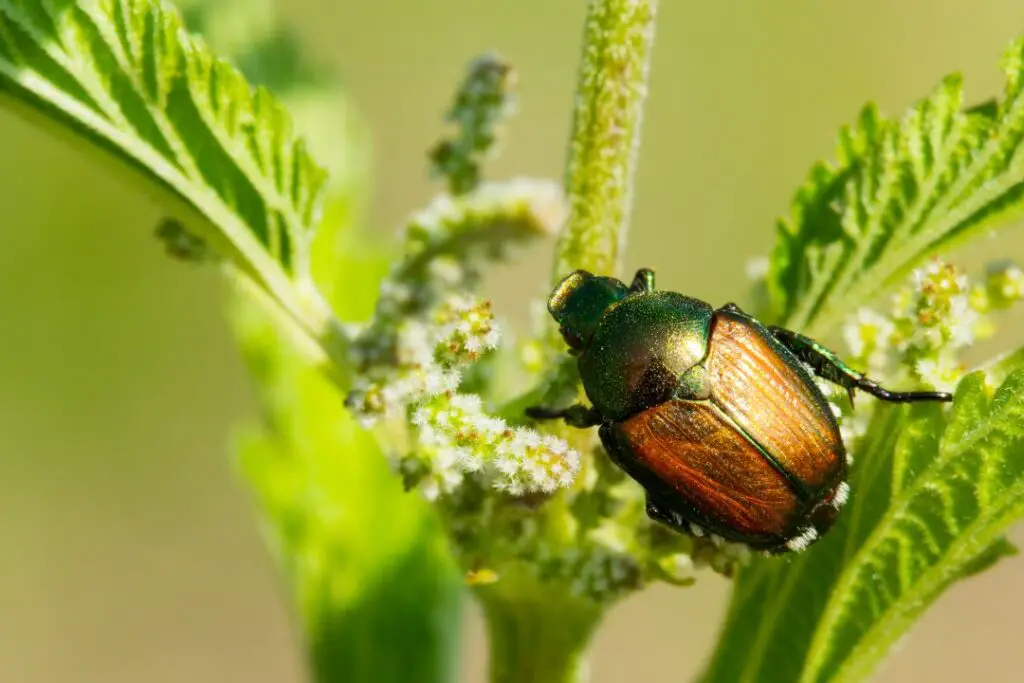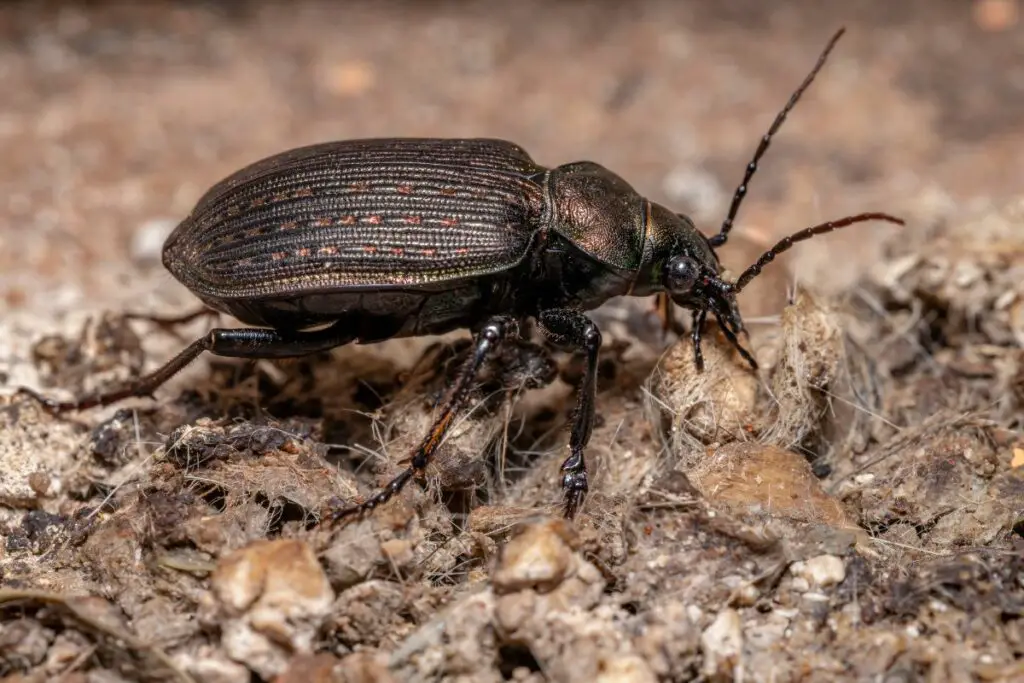Last updated on October 24th, 2023 at 03:19 pm
Beetles are far more than just tiny architects of the soil or the occasional garden visitor; they’re key players in your backyards and wild spaces.
From breaking down decaying matter to serving as a hearty meal for a host of predators, beetles are indispensable to ecosystems worldwide.
So, who’s dining on these crunchy critters, and how do beetles manage to dodge the dinner plate? Let’s unravel the complex world of beetle predators and the ingenious ways these insects defend themselves. Ready to dig in?
11 Animals That Eat Beetles
We’ve created the definitive list of animals that eat beetles packed with some of the most fearsome predators in the world.
From the aerial attacks of birds flying overhead to the ambush tactics of spider species, there’s a lot of danger to contend with for unsuspecting beetles.
Birds
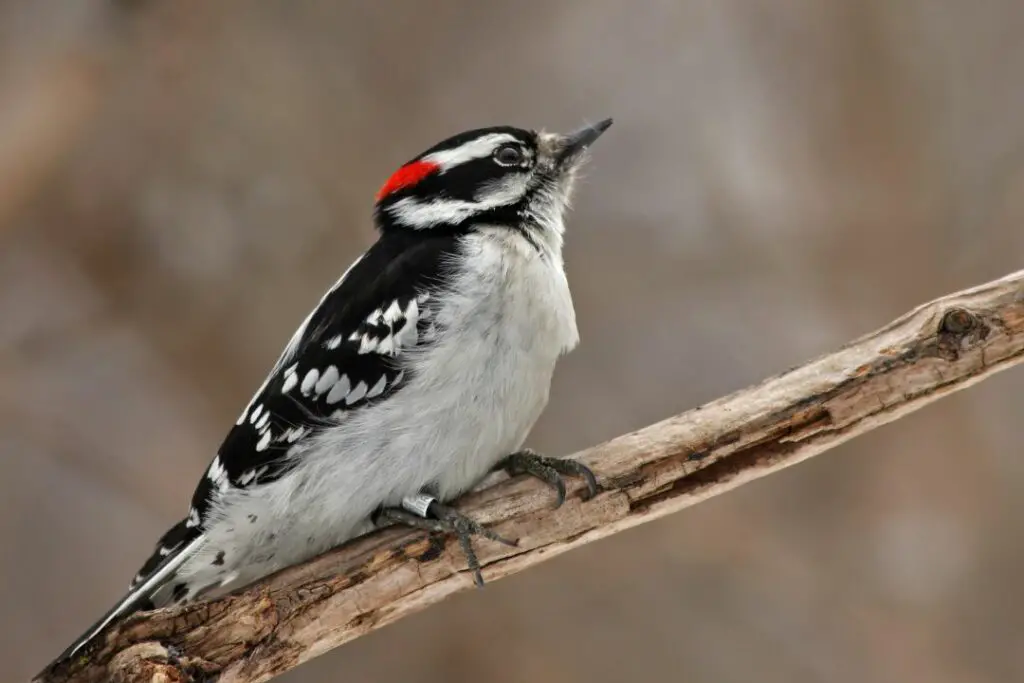
- Animal Name: Downy Woodpecker (Picoides pubescens)
- Habitat: Forests, woodlands, and suburban areas
- Diet: Insectivore
- Method of Hunting: Pecks at tree bark to find beetles and beetle larvae
- Impact on Beetle Population: Moderate; they specialize in eating insects
- Conservation Status: Stable
- Interesting Fact: Woodpeckers have a specialized tongue that can extend to catch prey hiding in crevices
Woodpeckers are like the detectives of the bird world, pecking away at tree bark to uncover hidden beetles and beetle larvae. They’re particularly fond of beetle species that burrow into wood. Their specialized tongues can extend to snag beetles hiding in the nooks and crannies of trees, making them a unique predator in the beetle food chain.
Frogs
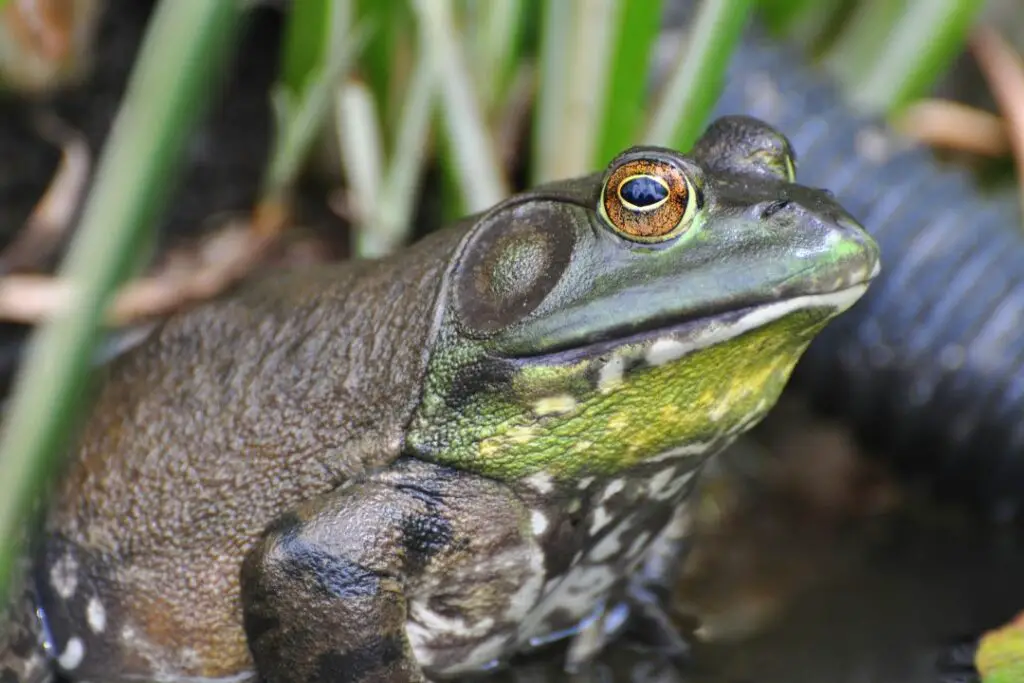
- Animal Name: American Bullfrog (Lithobates catesbeianus)
- Habitat: Freshwater ponds, lakes, and marshes
- Diet: Carnivore
- Method of Hunting: Sits near water and uses its tongue to catch beetles
- Impact on Beetle Population: Low to moderate; they eat a variety of prey
- Conservation Status: Thriving
- Interesting Fact: The American Bullfrog is the largest frog in North America, weighing up to 1.5 pounds
The American Bullfrog sits patiently near the water’s edge, waiting for a beetle to come within range. Once a beetle is close enough, the bullfrog uses its long, sticky tongue to snatch it out of the air or off a leaf in a split second.
Mammals
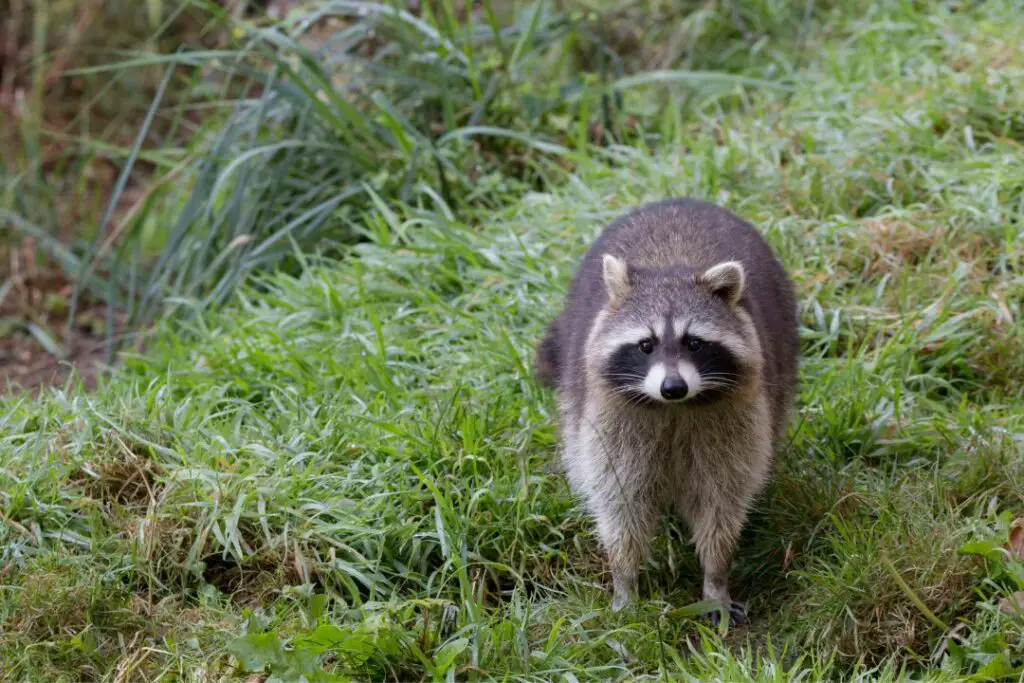
- Animal Name: Raccoon (Procyon lotor)
- Habitat: Forests, urban areas, and near water sources
- Diet: Omnivore
- Method of Hunting: Foraging and digging in soil or under rocks
- Impact on Beetle Population: Moderate; they eat various food sources
- Conservation Status: Widespread
- Interesting Fact: Raccoons are known for their problem-solving abilities and can even open latches and jars
Raccoons are the crafty bandits of the animal kingdom, and they’re not picky regarding food. By night, these masked marauders forage through forests, gardens, and even trash cans, looking for a meal. And guess what’s often on the menu?
Raccoons have a knack for digging. They’ll turn over rocks, rummage through leaf litter, and dig into the soil to find beetle larvae, commonly known as grubs. Adult beetles aren’t safe either; raccoons will snatch them up if given a chance.
Spiders
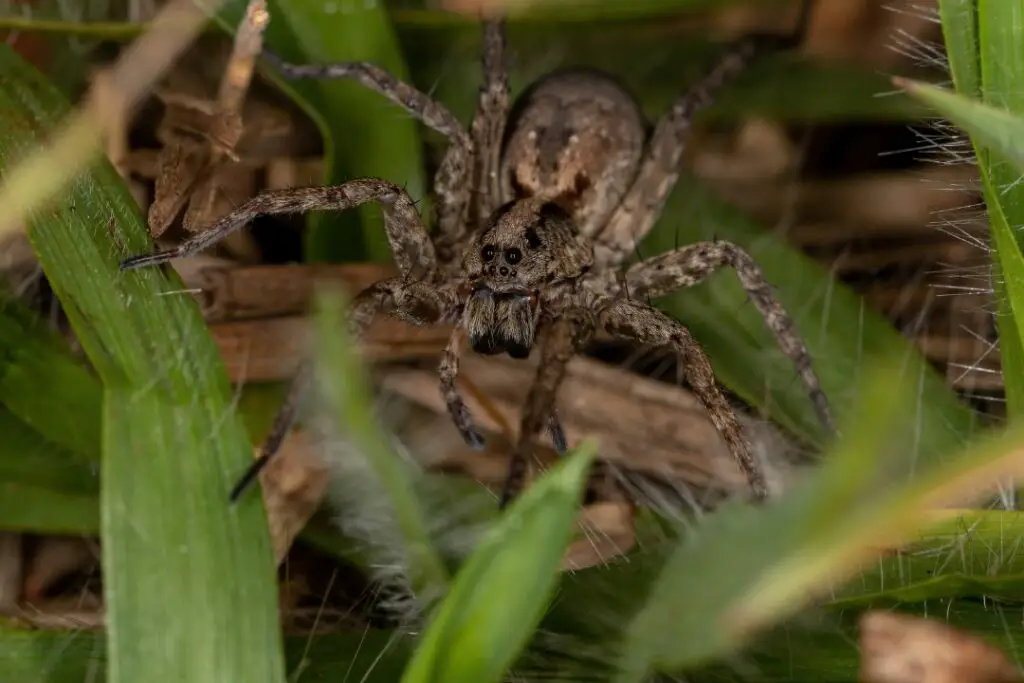
- Animal Name: Wolf Spider (Lycosidae)
- Habitat: Forests, grasslands, gardens, and even homes
- Diet: Carnivore
- Method of Hunting: Ambush and pounce
- Impact on Beetle Population: Moderate; they eat various small insects
- Conservation Status: Widespread
- Interesting Fact: Wolf spiders carry their egg sacs on their abdomen and their young on their back after hatching
Wolf spiders are the hunters of the spider world. They don’t spin webs to catch their prey, relying on speed and agility. They wait under rocks or leaves for the perfect moment to pounce on an unsuspecting beetle.
They can even switch from ambush to hunt mode, stalking their unsuspecting prey through the undergrowth before leaping into the attack and clamping down with their strong jaws.
*Additional reading – Journey into the undergrowth to meet the spiders that kill and eat bees.
Assassin Bug
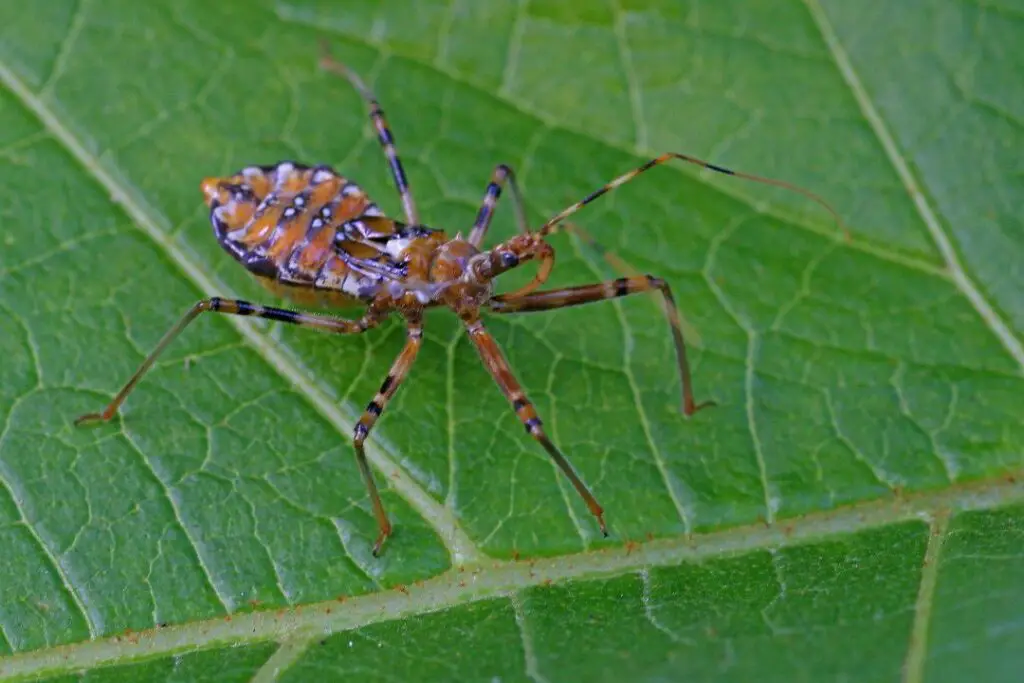
- Animal Name: Assassin Bug (Reduviidae)
- Habitat: Forests, meadows, gardens, and agricultural fields
- Diet: Carnivore
- Method of Hunting: Ambush and inject lethal saliva
- Impact on Beetle Population: Moderate to high; they specialize in eating insects
- Conservation Status: Common in various habitats
- Interesting Fact: Assassin bugs are known for their painful bites, which can cause allergic reactions in some people
These hitmen of the insect world don’t just kill; they make it an art form. They lie in wait, often camouflaged against leaves or bark, ready to ambush their prey, which frequently includes beetles.
Using sharp needle-like beaks to inject lethal saliva into their prey, it slowly liquefies the insides of the beetle, turning it into an easily consumable soup. Yeah, it’s as brutal as it sounds.
Lizards
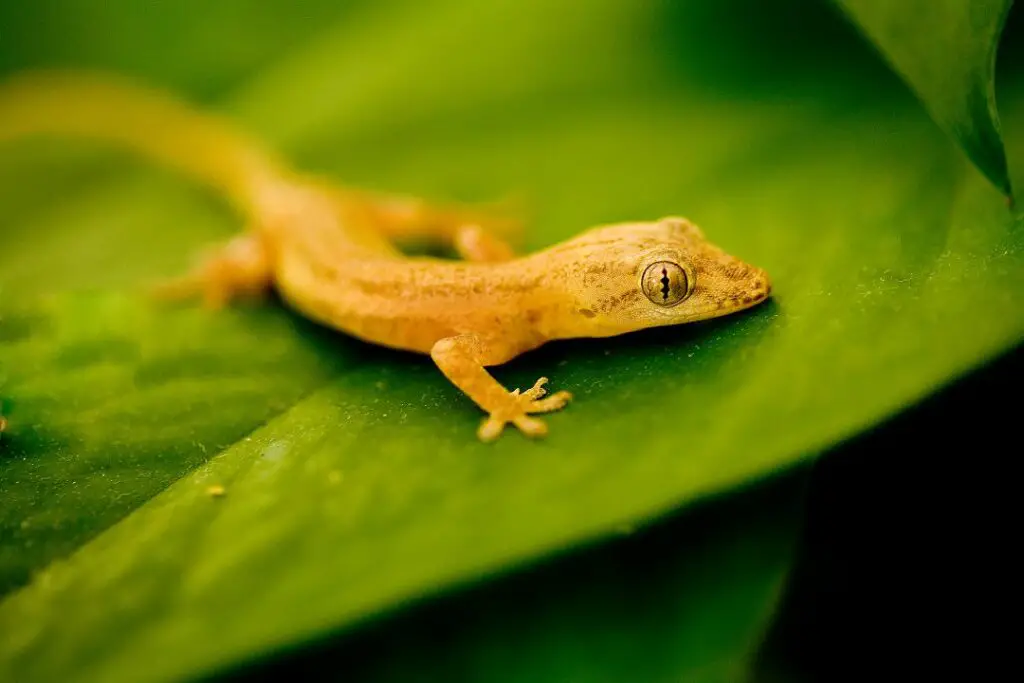
- Animal Name: Gecko (Gekkonidae)
- Habitat: Tropical and subtropical regions, often near human dwellings
- Diet: Insectivore
- Method of Hunting: Ambush and quick strikes
- Impact on Beetle Population: Moderate; they eat various small insects
- Conservation Status: Common in various habitats
- Interesting Fact: Geckos can climb walls and even ceilings thanks to specialized toe pads filled with tiny hair-like structures
These acrobats of the lizard world can climb walls, scuttle across ceilings, and make gravity-defying leaps, all in the name of snagging a tasty beetle. Being skilful ambush predators, they often wait strategically for a beetle to wander too close.
Once the beetle is within striking distance, it lunges with lightning speed, capturing the beetle in its jaws. Their quick reflexes and agile movements make them a perfect natural predator of the slower-moving beetle.
Snakes
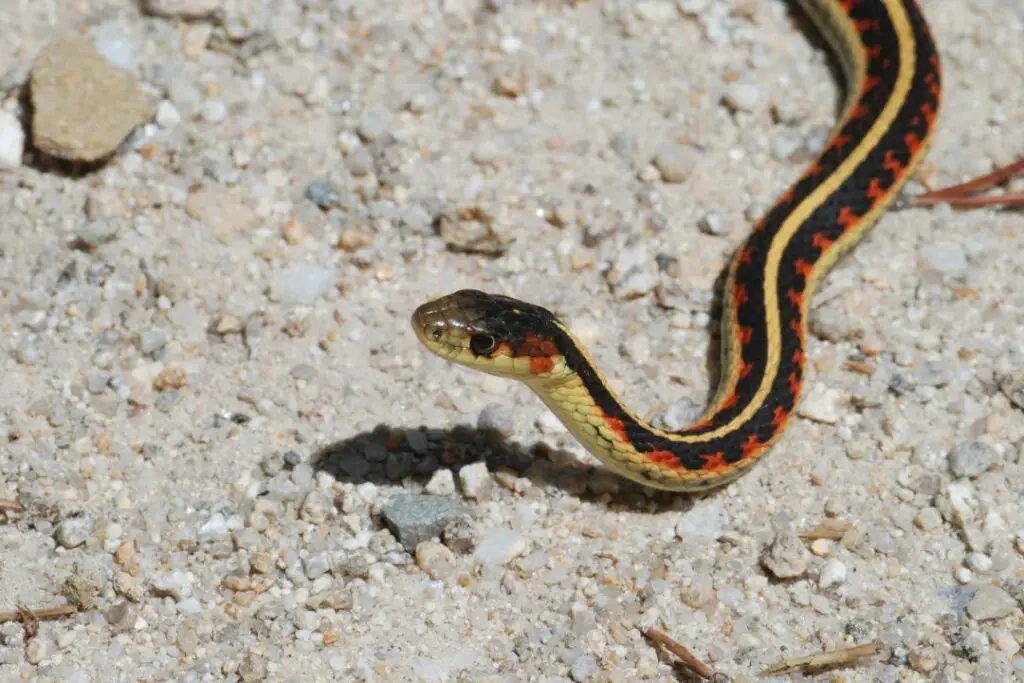
- Animal Name: Garter Snake (Thamnophis sirtalis)
- Habitat: Meadows, woodlands, and near water bodies
- Diet: Carnivore
- Method of Hunting: Foraging and quick strikes
- Impact on Beetle Population: Low; they have a varied diet
- Conservation Status: Widespread
- Interesting Fact: Garter snakes are one of the few snake species that are active during the day
Garter snakes eat a little of everything—fish, worms, small mammals, and beetles. These snakes are active foragers, slithering through grass and underbrush for a meal. When they encounter a beetle, they strike quickly, swallowing it whole.
Bats
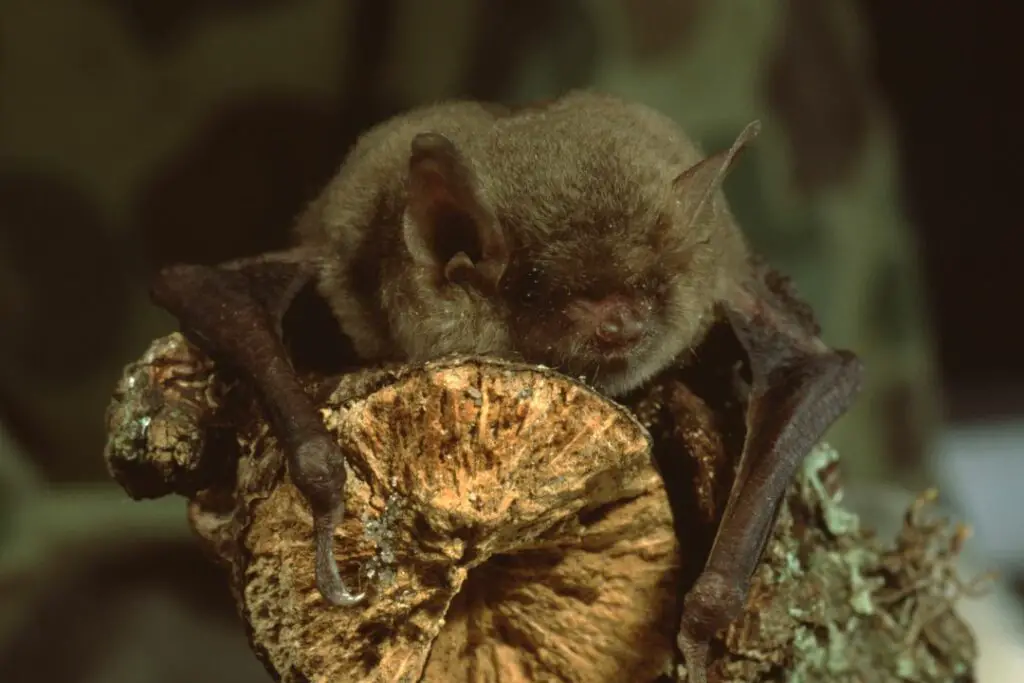
- Animal Name: Little Brown Bat (Myotis lucifugus)
- Habitat: Forests, caves, and near water bodies
- Diet: Insectivore
- Method of Hunting: Aerial pursuit using echolocation
- Impact on Beetle Population: Moderate; they eat various flying insects
- Conservation Status: Declining due to White-Nose Syndrome
- Interesting Fact: Little Brown Bats can live up to 30 years, a surprisingly long lifespan for a small mammal
These night-time acrobats swoop and dive to catch their insect prey. They use echolocation to navigate and locate their food, emitting high-pitched sounds that bounce off objects and return as echoes.
Once a beetle has been found, the Little Brown Bat enters hunt mode. It uses its wing and tail membranes to scoop up the beetle, transferring it to its mouth mid-flight. It’s a display of aerial agility that’s nothing short of impressive.
Small mammals
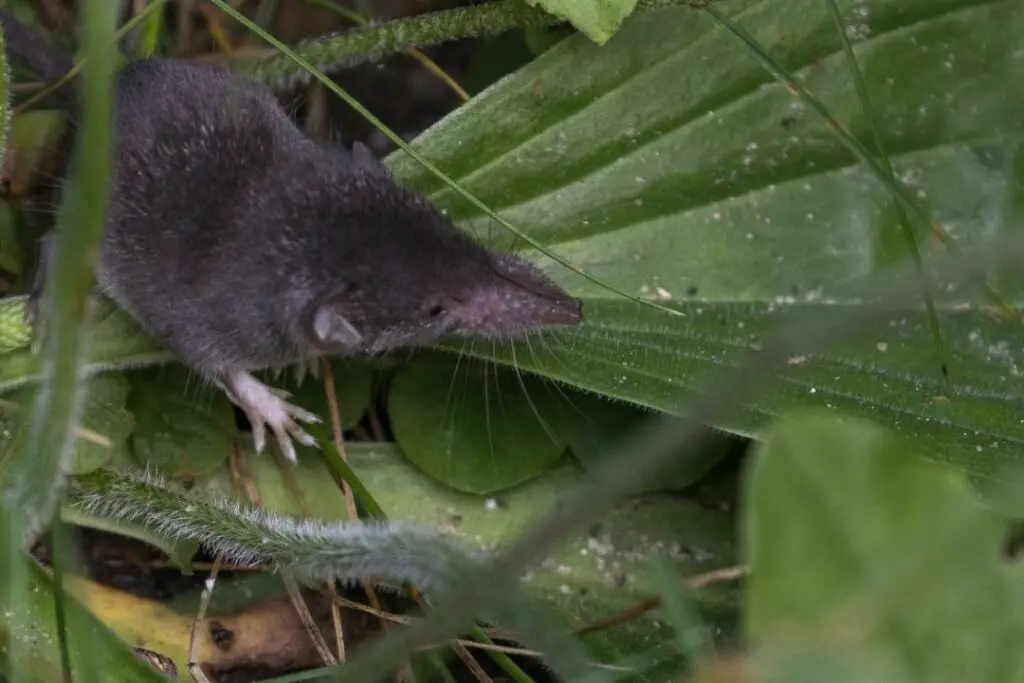
- Animal Name: Common Shrew (Sorex araneus)
- Habitat: Forests, grasslands, and gardens
- Diet: Insectivore
- Method of Hunting: Foraging and quick pouncing
- Impact on Beetle Population: Moderate to high; they primarily eat insects
- Conservation Status: Common in various habitats
- Interesting Fact: Shrews have a high metabolism and need to eat up to three times their body weight daily
Don’t let their cute exterior fool you; shrews are voracious predators with a big appetite for beetles. These tiny mammals are always on the move, foraging through leaf litter, under rocks, and in the soil to find their next meal.
They use their keen senses of smell and hearing to locate beetles. Once zeroed in, they pounce with surprising speed, using their sharp teeth to incapacitate their prey.
Ants
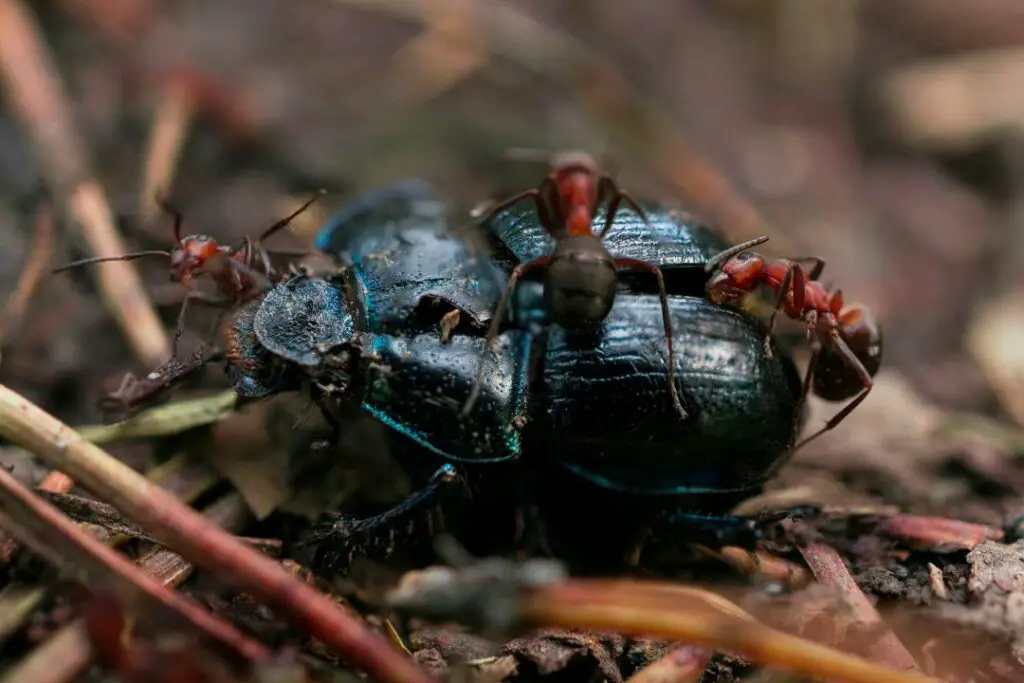
- Animal Name: Fire Ant (Solenopsis invicta)
- Habitat: Grasslands, urban areas, and agricultural fields
- Diet: Omnivore
- Method of Hunting: Swarming and stinging
- Impact on Beetle Population: High; they can overwhelm individual beetles and larvae
- Conservation Status: Invasive in many areas
- Interesting Fact: Fire ants can build floating rafts out of their bodies to survive floods
Fire ants are the gangs of the insect world, avoiding the solo kill in favour of overpowering with sheer numbers. And when it comes to beetles, it’s no different. A combination of aggressive behaviour and potent stings make them a formidable threat to any insect that crosses their path.
Praying Mantis
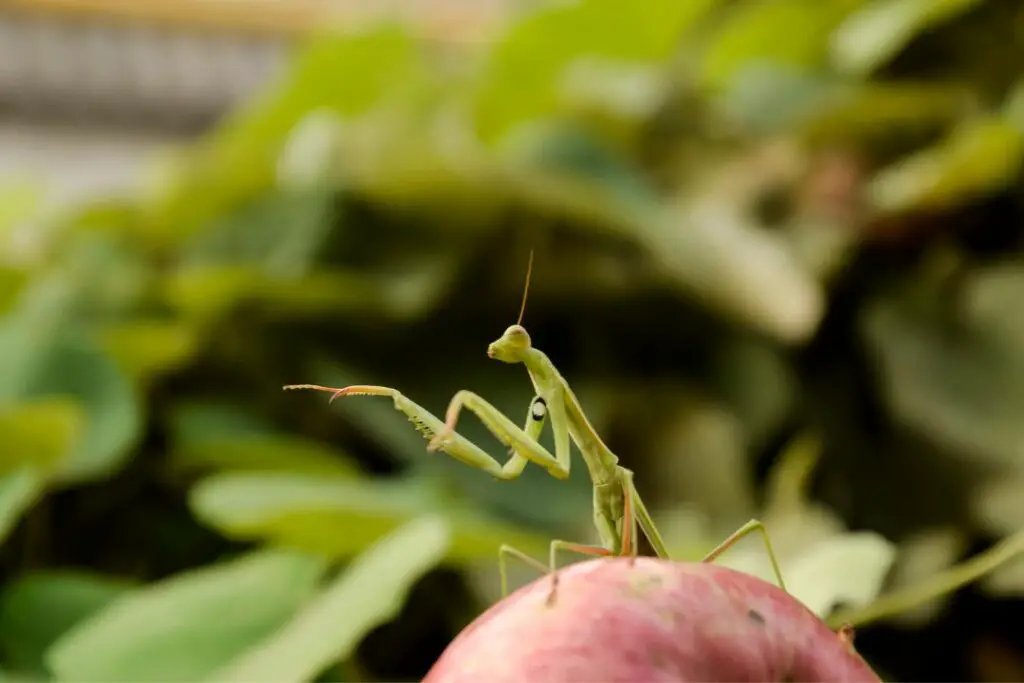
- Animal Name: Praying Mantis (Mantodea)
- Habitat: Gardens, meadows, and forests
- Diet: Carnivore
- Method of Hunting: Ambush and grasp with spiny forelegs
- Impact on Beetle Population: Moderate; they eat various insects
- Conservation Status: Common in various habitats
- Interesting Fact: The praying mantis can rotate its head 180 degrees to scan its surroundings
We left the scariest till last with the alien-looking Praying Mantis. These expert ambush predators wait for unsuspecting beetles before lunging and grabbing with their powerful serrated claws.
Perhaps most terrifyingly, once they’ve caught a beetle, they consume it head-first, like something straight out of a horror movie. But it’s not all bad news. Beetles have evolved to stay alive in a whole range of different ways.
How Beetles Defend Themselves
Beetles have a few tricks up their hard exoskeletons. Let’s delve into the fascinating world of beetle defence mechanisms, from chemical warfare to brute strength.
Chemical defences
Many beetles employ chemical defences. When threatened, they release noxious substances that deter predators.
The Japanese beetle secretes a fluid from its joints that is distasteful to many predators, making them think twice before biting.
Camouflage and mimicry
Others blend into their surroundings, making it difficult for predators to spot them.
Camouflage is particularly effective in leaf litter or tree bark, where the beetle’s colouration matches the environment.
Armour and strength
When it comes to brute strength, few can match the Hercules beetle. This beetle species has a robust exoskeleton that acts like armour, protecting it from predators.
Similarly, the Goliath beetle, one of the largest species, uses its sheer size and tough exoskeleton to deter predators.
Flight
Water beetles opt for every different approach and take to the skies to escape predators.
Their strong wings allow them to quickly flee dangerous situations, making it challenging for ground predators to catch them but not so much help against a hungry bird.
Playing dead
Some beetles employ the “playing dead” tactic, “thanatosis.”
When threatened, they’ll flip onto their backs and remain motionless, tricking predators into thinking they’re already dead and thus unappetizing.
Social behavior
Certain types of beetles, like some species of ladybugs, exhibit social behaviour as a defence. They gather in groups, making it more challenging for predators to single out individuals.
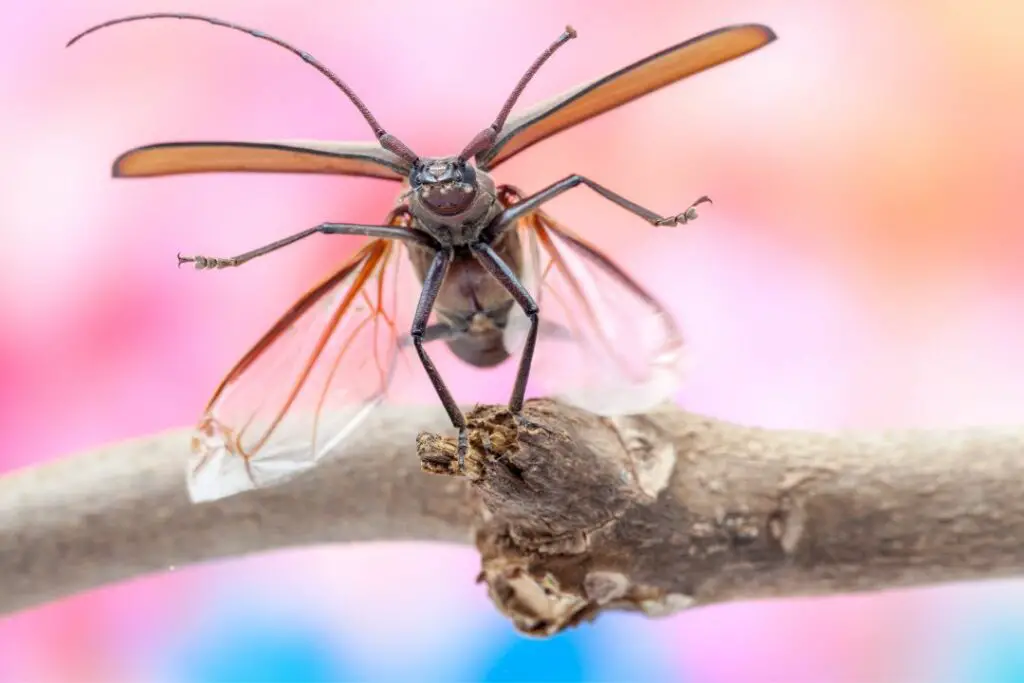
In Conclusion
So, whether it’s the Japanese beetle using chemical warfare or the Hercules beetle flexing its muscles, beetles have evolved various ways to fend off predators.
They may be a food source for many, but they’re not going down without a fight! Don’t miss our other great reads below, packed with more fascinating insights into the insects in your garden.

